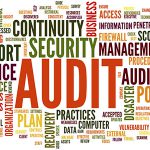IT AUDIT SERVICE
Whatever your needs, We can help
IT Auditing Service – In today’s information-driven business environment, organizations must continually evaluate their ability to protect information assets. This includes not only security protocols and development processes but also continued availability of information to authorized parties. The purpose of an IT audit is to determine how effectively an organization is maintaining these protocols and to provide direction on how to improve. Effective IT audit services help organizations not only improve internal controls and security but also achieve their IT goals and objectives.
Information Technology Audit Services works to identify areas of technical risk including application, infrastructure, systems, and process risks.
IT Audit Services can facilitate the selection of controls and the identification of technical risk in order to allow management to make strong strategic and tactical decisions.
In addition to assessing current computer applications, IT Audit consults on the development and implementation of new systems to ensure that internal controls are establish and comply with industry standards.
We provide IT auditing services that enable organizations to gain insight into the threats inherent in today’s highly complex technologies. We ensure that your IT risks, key management priorities and core systems are being appropriately managed.

